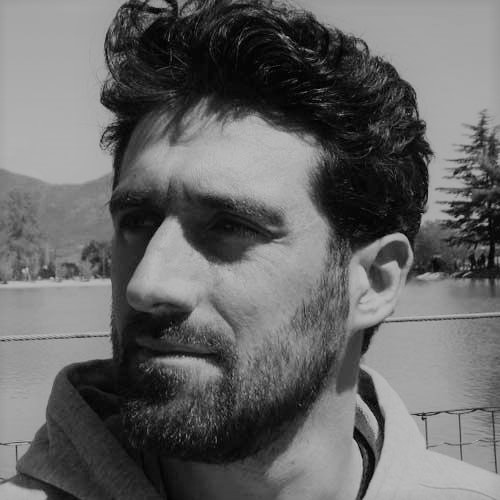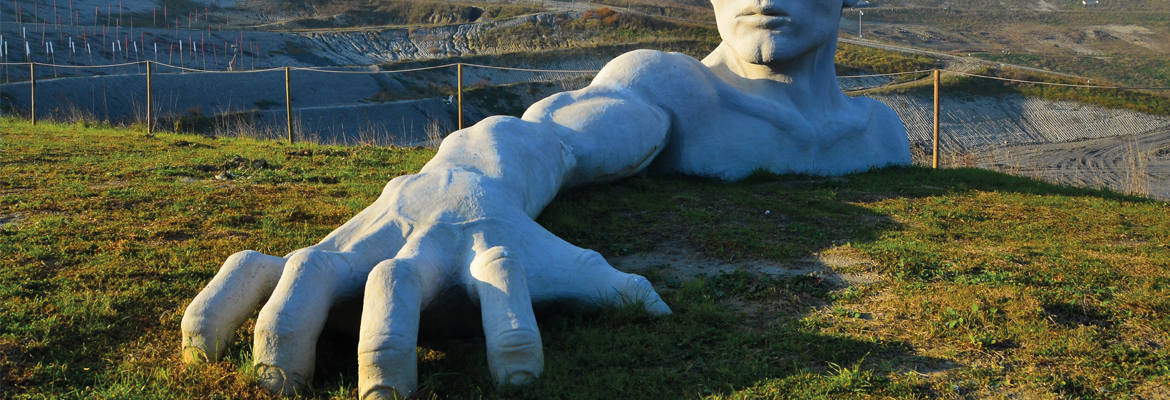The story of Belvedere SPA started in the past century. Founded in 1997, for the last 20 years, it has managed the waste disposal site for the Municipality of Peccioli, in the Province of Pisa. A unique landfill, which on the one hand gathers waste from the provinces of Pisa, Florence, Prato and Massa Carrara, and on the other generates economic surplus and positive effects for the entire region.
The landfill was opened in 1978 and expanded for the first time in 1988. In 1997, after the rehabilitation and regularisation of the site, the conditions for the establishment of the Belvedere SPA were put in place. Today this company manages the entire dumping site, in the locality of Legoli, where non dangerous waste is conferred. It also manages the mechanical and biological treatment facility (from the Italian TMB, “Trattamento Meccanico Biologico”) and provides services tied to environmental hygiene, such as the gathering of bulky waste and the sweeping of public areas.
The landfill consists of an area of 24 hectares, characterised by a terrain of clay loam soil. The 10-meter-high steps hold a stocking volume of 3 million cubic meters, which means that around 4 million tonnes of waste can be handled. Currently up to 1,000 tonnes a day and around 300,000 a year are processed. The plant, signalled by the Tuscan region as a site “of regional importance,” has a use life of 10 to 20 years. According to the regional plan of landfill rationing, it will remain one of the three operating sites of the twenty currently in operation.

Turning biogas into electricity since the 90s
Biogas generated from waste is intercepted through a dense network of micro-fissured tubes and aspiration wells distributed across the entire area. The gas, composed for at least half its parts of methane, is then sent to a cogeneration power plant for the production of electricity and heat: 13,000 MW of electric energy. This results in a closed energy circuit: the gas gathered fuels the entire site. Today the site is the last link in the chain of solid urban waste management: non recyclable waste is treated here. According to the ISPRA (Waste Report 2017) recycling in Tuscany is at around 51.5% with a 5 percentage point increase when compared to the previous year, taking into consideration a 1.4% increase in total waste generated (616 kg per capita). The Tuscan region is often cited as a prime example of virtuous management of organic waste through household composting, as this grew by 4% from 2015 to 2016.
To improve the quality of the waste conferred, reducing the disposal of organic waste in landfills (Directive 99/31/EC), Belvedere established a mechanised system for biological waste treatment in 2015. Here, solid urban waste is put through a mechanical selection that shreds waste matter, and then separates it by particle size. The next step is to recover the metals present in the waste and send them on for recovery. The remaining waste is then moved on to aerobic digestion, whereby a natural process of fermentation which takes place over three to four weeks prepares the waste for its transfer to the landfill.
The economic implications for the region
That which makes Belvedere SPA the renowned “Peccioli model” is its company structure, which sees it founded as a community public company. It is in fact composed of a distributed shareholder model (the public company is composed of 900 citizens, of which 500 are residents of Peccioli), that control around 36% of the social capital and actively participate in the management of the company, as well as the awarding of benefits. The remaining 64% is withheld by the municipality. In a territory of 5,000 inhabitants this means a reduction in tariffs and taxes, as well as an improvement in the services offered to the community, obtained by keeping economic resources in the area.
Belvedere SPA – which has an estimated value of €60 million, and a net worth of €40 million – has produced a direct impact on the territory that amounts to €20.2 million in 2016 alone, reaching 60% of the total volume of business generated in that year. Of these: €13.7 million went to the municipality; €3.6 million to the companies spread across the region; and €2.8 million to the citizens, between stocks, interest on dividends and wages for workers. In the time spanning between 2004 and 2016, the direct impact of Belvedere has been of €174.7 million.
Over the years the company has become an instrument for generating value at local level, with visible effects on the entire social fabric. In this way the Gross Value Added, an economic indicator that measures the effects generated by the Belvedere management and therefore the amount of wealth created, amounted to €15,4 million in 2016. Significant figures that have contributed to the creation of important infrastructure such as: a nursery, a school, a multi-storey car park, some museums and also sports facilities. This is without taking into consideration the numerous cultural events organised over the course of the years in the area, some of which extremely original, due to the fact that they were held at the landfill and treatment site.
In 20 years the municipality of Peccioli and Belvedere SPA have managed to create a perfect example of economic participation, whereby the waste “problem” has been transformed into an opportunity. Certainly, it was born out of a political desire, but it has developed thanks to a long term vision that favours the collective and places the community’s wellbeing at the forefront. The company has been able to generate value for the region and establish a model for wellbeing that makes the “Peccioli model” something to be aspired to and which can be replicated in many domestic realities, and even abroad.
A timeline of the initiative
- 2007: The pianist Charles Rosen celebrates 10 years of the company’s existence by playing an open air opera of Chopin on dump site.
- 2008: Organizing of a convention on the correct use of the planet’s resources with the participation of the Brazilian theologian Leonardo Boff.
- 2010: The “Fashion Tour 2010” fashion show.
- 2011: Simone Stefanelli, professional photographer, realizes a photographic report by mingling amongst employees.
- 2011: Lectio magistralis held by Dale Mortensen (Nobel prize for economics in 2010) with the title “What can politics do to increase employment.”
- 2016: Sergio Staino, together with his son Michele, create a large fresco mural entitled All’altezza delle margherite (“At the height of the daisies”) at the mechanical and biological treatment site.
Belvedere Spa, belvedere.peccioli.net

Interview with Renzo Macelloni, Mayor of Peccioli
by R. B.
“Why Belvedere is a Functioning Model”
Mayor Renzo Macelloni, president of Belvedere SPA, is one of the minds behind the “Peccioli model.” Here he explains how this objective was reached.
The story of Belvedere SPA started years ago. How has the concept of a landfill evolved over time and what have been the toughest challenges?
“The idea of a landfill has changed radically over the years. When we started at this landfill waste would be disposed of as it was, today – instead – only processed waste, and all special waste arriving from the treatment of municipal solid waste, is handed in. Therefore, a more selective and better treated type of waste is received: as of consequence even its management becomes simpler. The toughest challenges we have had to face include the relationship with our citizens and the environmental management of the site.”
Behind the success of Belvedere there is a precise political ideology. That by which even citizens are an active part in the decision making and management of such an important issue as the disposal of waste. What is the secret of this success?
“Without a doubt, on top of the attention to environmental management, another decisive factor for our success has been the involvement of citizens in the management of Belvedere SPA through shareholder participation. In this way we wanted to establish a tight relationship with direct responsibility in planning, environmental sensitivity and economic participation.”
The Peccioli landfill is the final link in the waste management cycle. Here you only receive waste that is not longer recyclable. What is your idea with regards to the concept of a zero landfills? What is the future of this type of waste disposal?
“The landfill is a site that is residual and strategic at the same time. Residual because only those materials that are residual to a waste processing and therefore are no longer useable are sent here; strategic because the absence of these types of sites doesn’t close the cycle of integrating waste, but rather creates waste emergencies. Zero waste sounds like something we should aspire to, but the reality today is quite different. The future of this site is first and foremost the maintaining of the landfill, this is the reason why it was enlarged, and the perfecting of the mechanical and biological waste treatment process. Furthermore, we are working towards important investments so as to acquire machinery that is on a par with the need to improve the recycling of waste. If properly managed, the landfill can become a temporary stocking unit: a true mine to be recovered in the future.”
Are the Peccioli model and Belvedere SPA – in your opinion – replicable in Italian and also international contexts?
“Everything is replicable: in this case there have to be some pre-conditions which are not always easy to find in a single context.”



